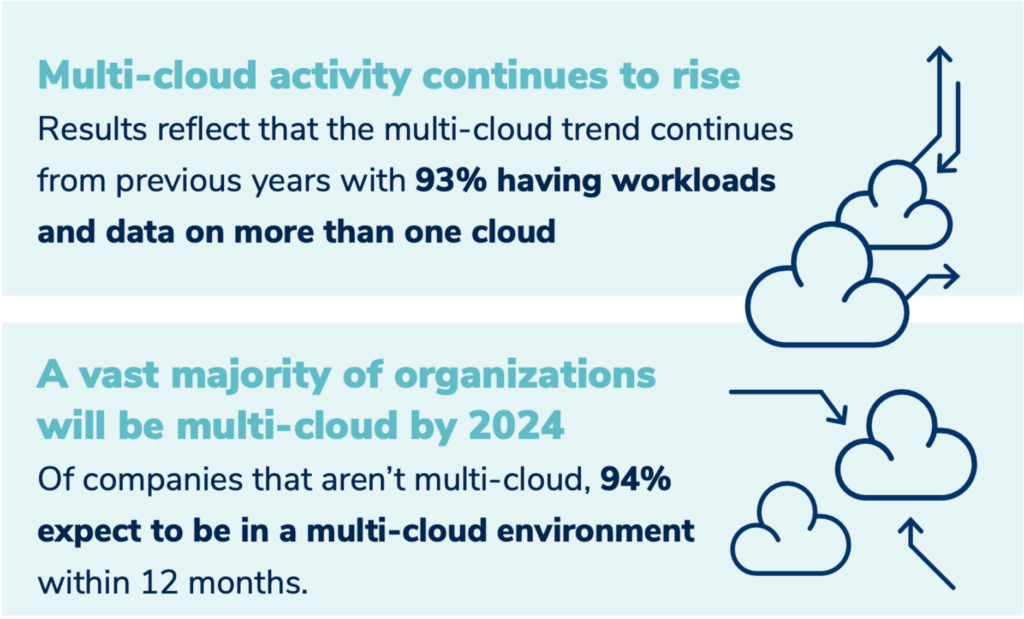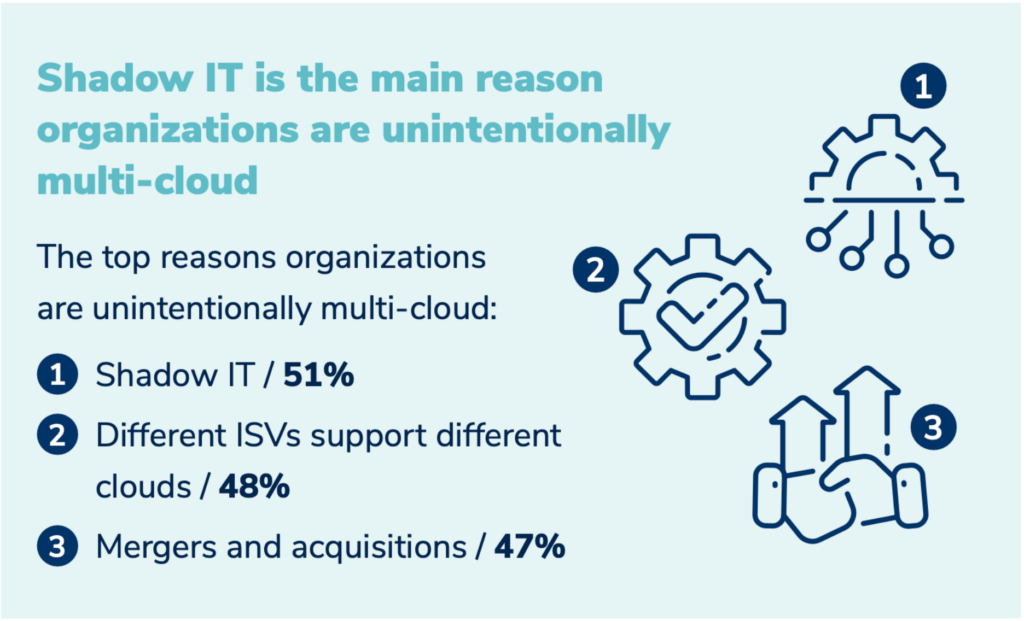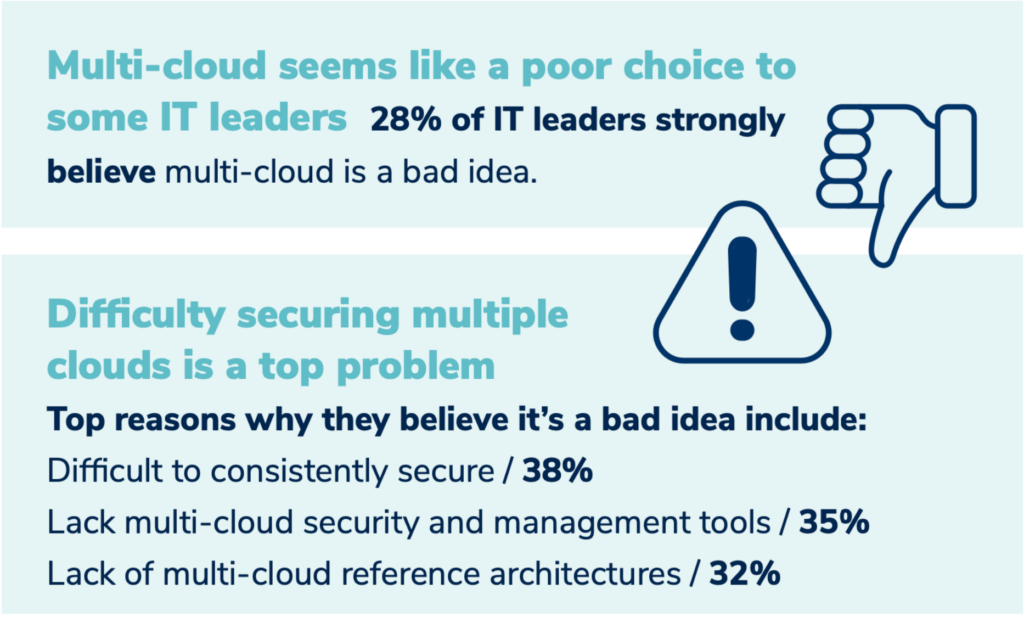Last month, we released the second annual Multi-Cloud Security Report, in which we surveyed 200 IT leaders from across the US. With some surprises and some not so surprising findings, this survey looked at the underlying problems that cloud security teams face when adopting multi-cloud security, the tools they are using, the tools they want to use in the future, and the skills they lack to securely scale across multiple cloud platforms.
Multi-Cloud Adoption Accelerated This Year
The survey findings revealed that an eye-popping 95% of organizations consider multi-cloud to be a strategic priority for 2023, but only 58% feel strongly confident that they have the right architecture in place to support multi-cloud security at this time.
This is especially concerning as multi-cloud activity remains on an upswing with 93% of respondents currently running workloads and storing data on more than one cloud. Of the 7% not yet in a multi-cloud environment, 94% expect to migrate to multi-cloud within the next 12 months.
Unintentional Factors Have Contributed to Multi-Cloud Acceleration
Organizations cited several unintentional factors that have accelerated their journey to a multi-cloud environment. Roughly half of those surveyed cited the rise of shadow IT as a threat (51%); followed by different ISVs that support different clouds (48%); and the data silos stemming from mergers and acquisitions (47%).
Multi-Cloud Resistance Remains, But Is It Futile?
Only 57% of IT leaders said they are confident that multi-cloud security is achievable with their current resources and technology. Yet even as multi-cloud adoption accelerates, 28% of IT leaders still strongly believe that multi-cloud is a “bad idea.” They cited issues such as the difficulty to consistently secure assets (38%); lack of multi-cloud security and management tools (35%); and lack of multi-cloud reference architectures (32%). Despite strong industry growth trends for multi-cloud hosting, 58% of those surveyed concluded that security standardization in a multi-cloud environment remains a “myth” that will never be achievable.
Another glaring problem: Fully 86% of organizations said that managing multiple distinct security architectures for multi-cloud security is prohibitively expensive. And 97% of respondents added that cloud service providers should help to define standards that enable better multi-cloud portability.
From this year’s survey results, it’s clear that multi-cloud security is a growing concern and top priority for nearly all organizations, but many still lack the needed technology and confidence to ensure comprehensive protections across multiple cloud platforms.
Preparing for a Multi-Cloud Future
In spite of the security complexities, business leaders continue to prioritize multi-cloud as part of their digital transformation, seeking new proactive ways to leverage this environment to benefit the business. As businesses embrace the many benefits of multi-cloud, including greater flexibility across cloud workloads and a more nimble architecture, it’s critical to consider the security challenges that will support this architecture.
Multi-cloud and solving for the many architectural and technical challenges is a big reason Cisco recently announced the intent to purchase Valtix. We couldn’t be more excited about the union and the opportunity to really accelerate the industry’s first secure cloud networking solution that delivers advanced security for enterprise multi-cloud.



